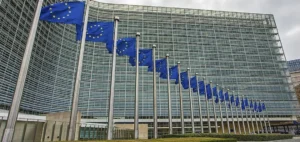HD Hyundai, a South Korean company, and TerraPower, a major American nuclear player, have signed a strategic partnership to develop critical components for the modular nuclear reactor Natrium. This project, located in Kemmerer, Wyoming, marks a new phase in the evolution of Small Modular Reactors (SMR) and their role in decarbonization.
The Natrium reactor, with a capacity of 345 MW, is based on Sodium Fast Reactor (SFR) technology. This type of reactor uses fast neutrons to generate energy and liquid sodium cooling. This configuration significantly improves safety and reduces nuclear waste, which accounts for only one-twentieth of that produced by traditional reactors.
Growing demand for SMRs
As governments and businesses aim to meet ambitious carbon neutrality goals, interest in SMRs continues to grow. These reactors provide an economical and adaptable alternative to large nuclear power plants, often challenged by safety issues and public acceptance.
According to a MarketsandMarkets study, the SMR market could grow from $5.7 billion in 2022 to $6.8 billion by 2030, with an annual growth rate of 2.3%. Projects like Natrium illustrate how this technology could redefine global energy policy by diversifying low-carbon energy sources.
Technology and strategy of the players
To successfully execute this project, HD Hyundai plans to mobilize the skills of its affiliate, Hyundai Heavy Industries. This company has developed expertise in complex projects such as the International Thermonuclear Experimental Reactor (ITER) and the Korean Superconducting Tokamak Advanced Research (KSTAR).
The reactor vessels, a central element of the Natrium project, will be manufactured to ensure optimal temperature control and operational safety. These vessels will house the reactor core where nuclear fission takes place.
An evolving energy context
The Natrium project is part of a global shift toward decarbonization in energy policies. With ambitious targets to reduce greenhouse gas emissions, governments, particularly in the United States, are considering enhanced use of nuclear energy as a clean and reliable energy source.
The Nuclear Regulatory Commission (NRC), the U.S. regulatory authority, plays a crucial role in supervising these projects. The realization of Natrium will depend on obtaining the necessary construction and operational permits. The goal is to complete the reactor by 2030.
Political and industrial challenges
This collaboration between HD Hyundai and TerraPower reflects the evolution of strategic relationships between South Korea and the United States in the energy sector. Bilateral partnerships in key sectors like nuclear energy align with a shared vision to enhance energy security while reducing emissions.
The development of SMRs also fits into broader geopolitical challenges, with increasing competition to dominate this technological sector. Investments in these reactors could transform national and international energy strategies in the medium term.






















